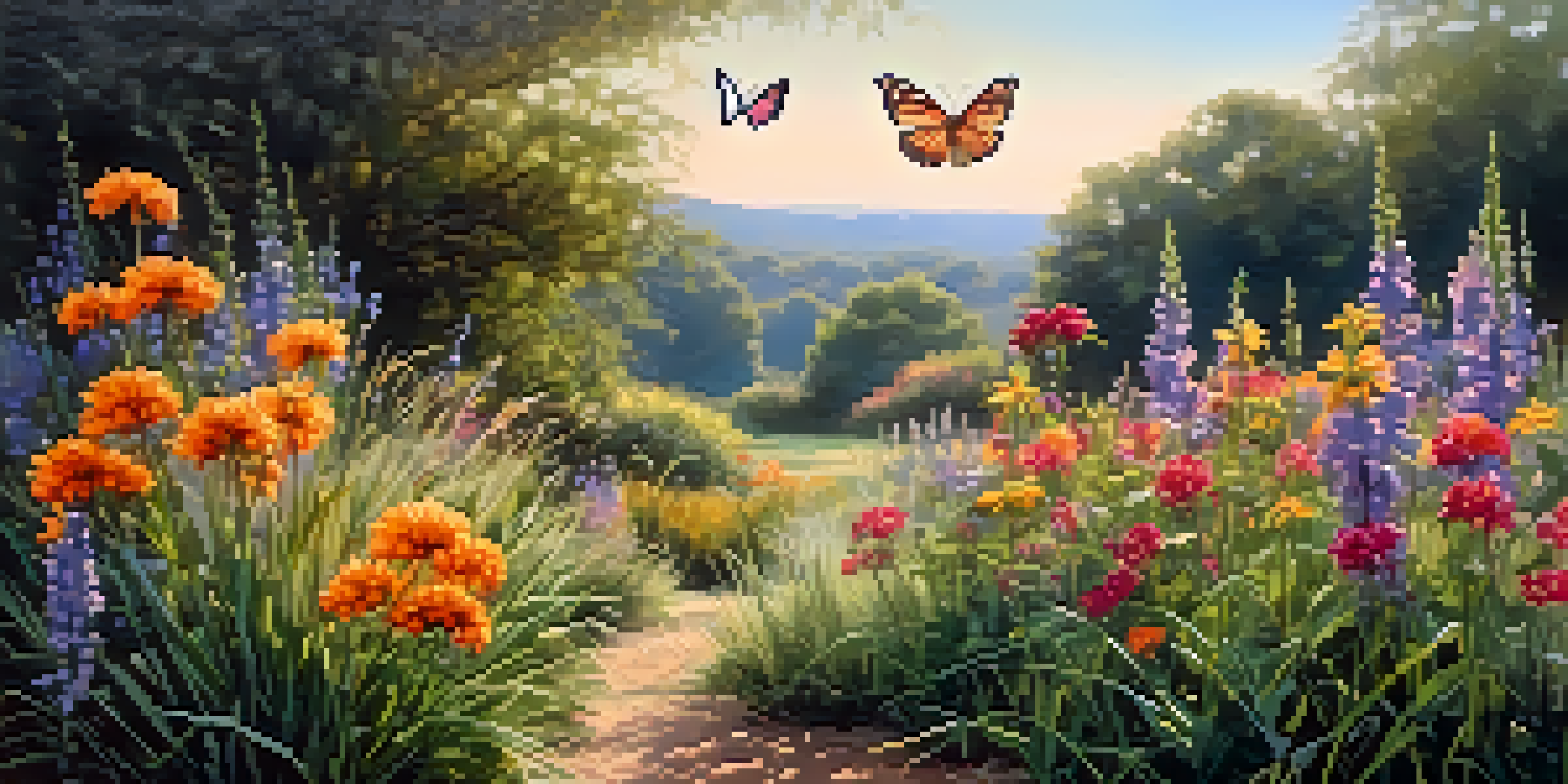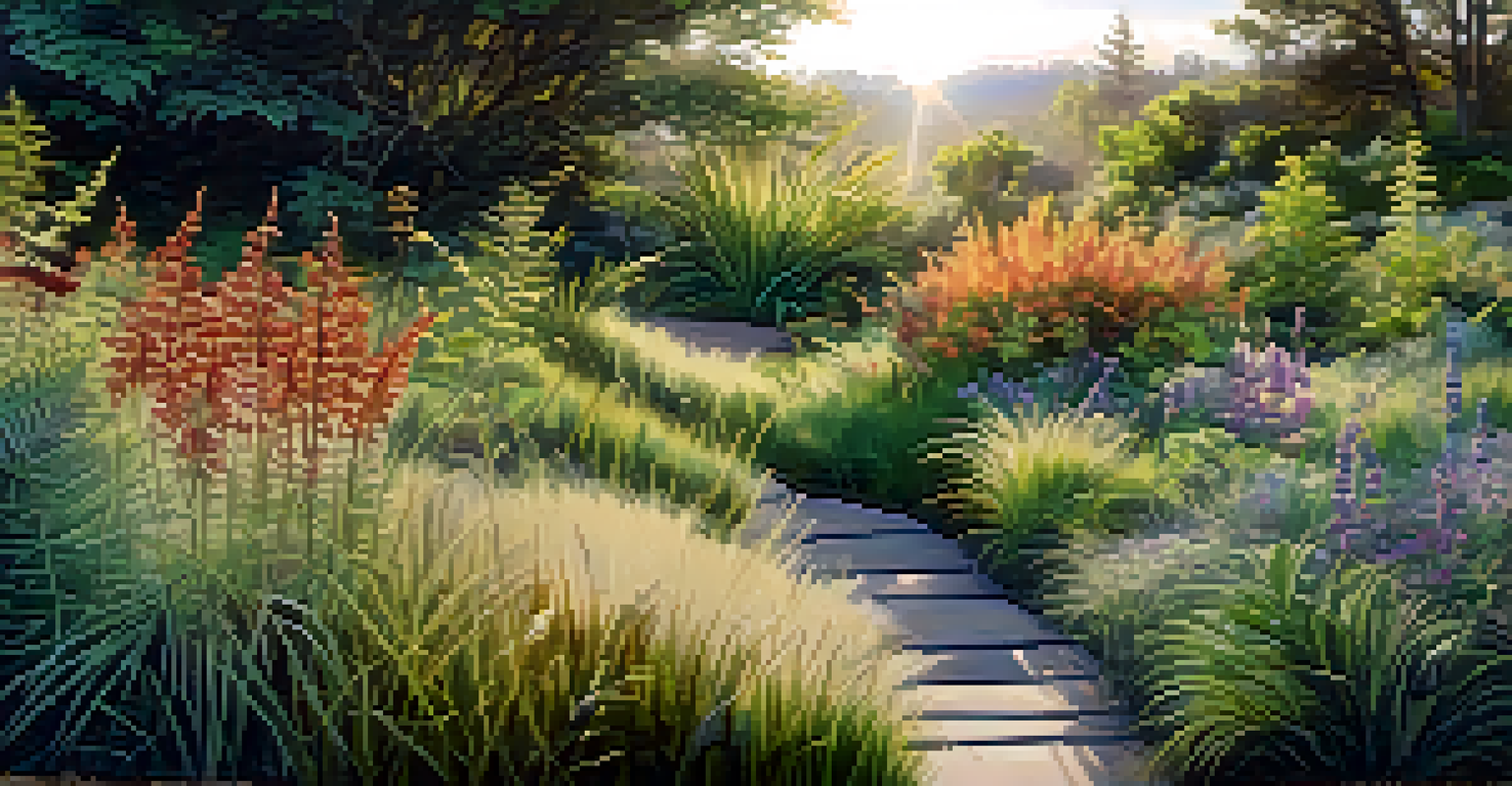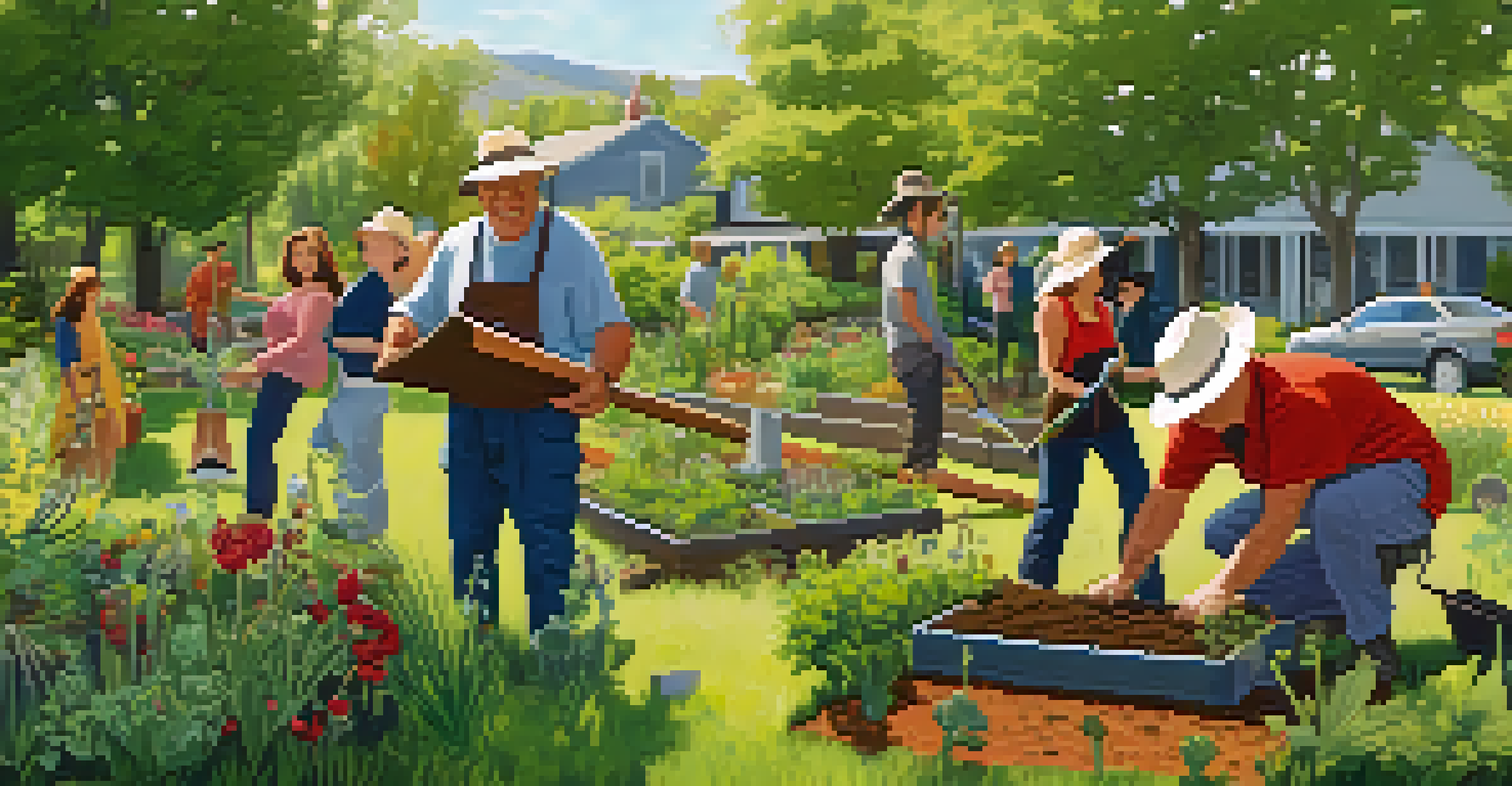Incorporating Native Plants in Outdoor Landscapes

Understanding the Value of Native Plants
Native plants are species that naturally occur in a specific region, adapting well to the local climate and soil. By using these plants in your landscape, you create a harmonious environment that supports local wildlife. For instance, a butterfly garden filled with native flowers can attract pollinators, enhancing biodiversity right in your backyard.
Native plants are the backbone of a healthy ecosystem. They provide food and habitat for wildlife, support biodiversity, and help maintain the balance of nature.
These plants often require less maintenance compared to non-native species, as they are already adapted to the local conditions. This means less watering, fewer fertilizers, and reduced pesticide use, which is great for both time and the environment. Think of it as growing plants that are already experts at thriving in your area.
Moreover, native plants can help prevent soil erosion and improve water quality by stabilizing the soil. They provide essential habitats for local birds, insects, and other wildlife, creating a vibrant ecosystem. In essence, incorporating native plants is like inviting your local nature to take center stage in your garden.
Choosing the Right Native Plants for Your Region
Selecting the right native plants involves understanding your local climate, soil type, and ecosystem. Start by researching which plants are indigenous to your area, as this will ensure they flourish. Local gardening centers often have resources or can provide recommendations, making this process much smoother.

Consider the specific conditions of your outdoor space, such as sunlight exposure and moisture levels. For example, you might choose drought-resistant natives if you live in a dry area, or shade-loving plants for a cooler, darker corner of your yard. This matching process is similar to finding the perfect puzzle piece that fits just right.
Benefits of Native Plants
Native plants thrive in local conditions, requiring less maintenance and supporting local wildlife.
Don't hesitate to consult with local conservation groups or extension services; they can provide invaluable insights on which plants will thrive best in your landscape. This guidance can save you time and effort, allowing you to create a beautiful, sustainable garden that feels uniquely yours.
Designing a Beautiful Landscape with Native Plants
When designing your landscape, think about layering plants to create depth and visual interest. Tall native grasses can serve as a backdrop, while colorful wildflowers can act as focal points. Imagine a picturesque scene where each plant plays a role, much like a well-rehearsed orchestra.
The greatest gift you can give the world is to plant a tree, and the second greatest is to plant a native plant.
Incorporating a variety of textures, colors, and heights will not only make your landscape more appealing but also provide diverse habitats for local wildlife. For instance, the fluffy seed heads of native grasses can provide food for birds, while vibrant flowers attract pollinators. This diversity is crucial for a balanced ecosystem.
Additionally, consider creating distinct zones within your garden, such as a meadow area or a shaded woodland corner. These zones can support different types of native plants and wildlife, helping you to curate a rich, inviting space. With thoughtful design, your garden can transform into a vibrant retreat for both you and nature.
The Environmental Benefits of Native Plants
Native plants support local wildlife and promote biodiversity, which is vital for a healthy ecosystem. By providing food and habitat for native species, you contribute to the survival of local birds, butterflies, and bees. This connection is like weaving a tapestry of life that enriches your garden and the surrounding community.
Moreover, native plants play a crucial role in conserving water. Their extensive root systems help retain soil moisture and reduce runoff, making them more resilient during dry spells. By choosing native options, you are not just beautifying your space, but also practicing responsible water management.
Community Engagement in Gardening
Involving the community in native plant gardening fosters environmental stewardship and strengthens local connections.
Finally, native plants can help combat climate change by sequestering carbon and reducing the need for chemical fertilizers and pesticides. This means a healthier planet for future generations. Every small step you take in planting native species can contribute to a larger movement toward environmental sustainability.
Maintaining Your Native Plant Garden
Maintaining a native plant garden is generally easier than caring for non-native species, but it still requires attention. Regular monitoring for pests and weeds is essential, though many native plants are resilient against common garden issues. Think of it as nurturing a friendship; a little care goes a long way.
In the early stages, you may need to water your native plants more frequently until they establish a strong root system. Once settled, these plants will thrive with minimal intervention. This ease of maintenance allows you to enjoy your garden without constant worry, making it a truly relaxing oasis.
Consider incorporating practices such as mulching or using organic fertilizers to further support your native plants. These methods not only enhance growth but also contribute to the overall health of your garden ecosystem. With thoughtful maintenance, your native plant garden can flourish beautifully for years to come.
Involving the Community in Native Plant Gardening
Engaging your community in native plant gardening can create a shared passion for local flora and fauna. Organizing workshops or planting days can bring neighbors together, fostering a sense of camaraderie while beautifying the area. Imagine the joy of working side by side, planting seeds for both your garden and your friendships.
You might also consider collaborating with schools or local organizations to promote awareness of native plants. Educational programs can inspire the next generation to appreciate and protect their natural environment. This investment in education can lead to a ripple effect, encouraging more people to embrace sustainable gardening practices.
Resources for Native Gardening
Numerous resources, from online databases to local workshops, can enhance your native plant gardening experience.
Creating a community garden with native plants can serve as a living classroom, showcasing the beauty and benefits of local species. Such initiatives not only enhance green spaces but also cultivate a culture of environmental stewardship. Together, you can make a lasting impact on both your neighborhood and the ecosystem.
Resources for Native Plant Gardening
There are numerous resources available to help you make the most of your native plant gardening journey. Websites dedicated to native flora can provide extensive databases, offering insights into plant selection, care, and benefits. These online platforms are like treasure troves of information waiting to be explored.
Local gardening clubs and extension services often host workshops and events that can connect you with other native plant enthusiasts. Participating in these gatherings can expand your knowledge and introduce you to new friends who share your passion. Networking within this community can lead to more opportunities for learning and collaboration.

Finally, don't underestimate the power of books and articles dedicated to native gardening. Many authors and experts share their experiences and insights, offering tips that can help you avoid common pitfalls. Reading about others' journeys can inspire and motivate you on your path to creating a thriving native plant garden.